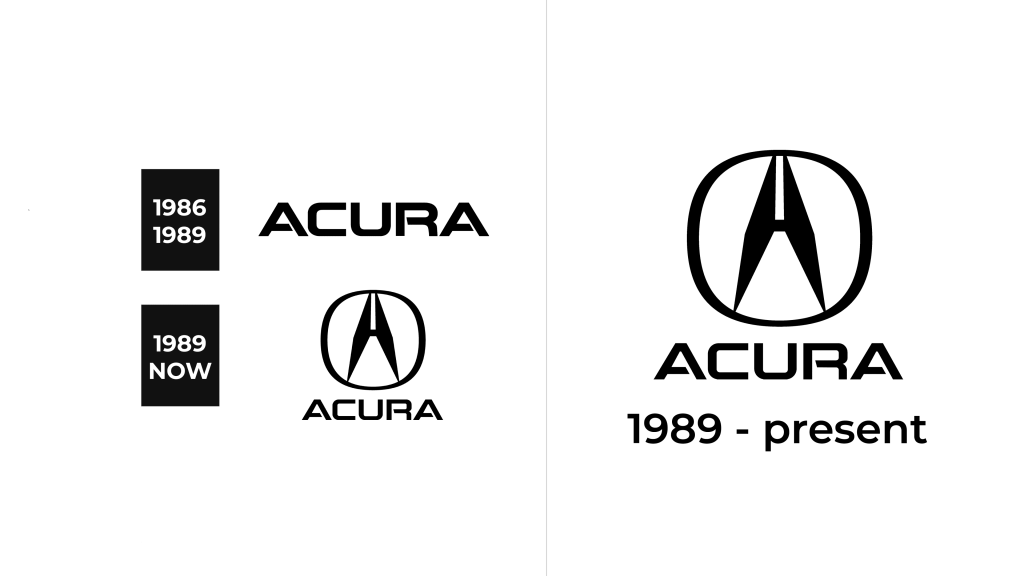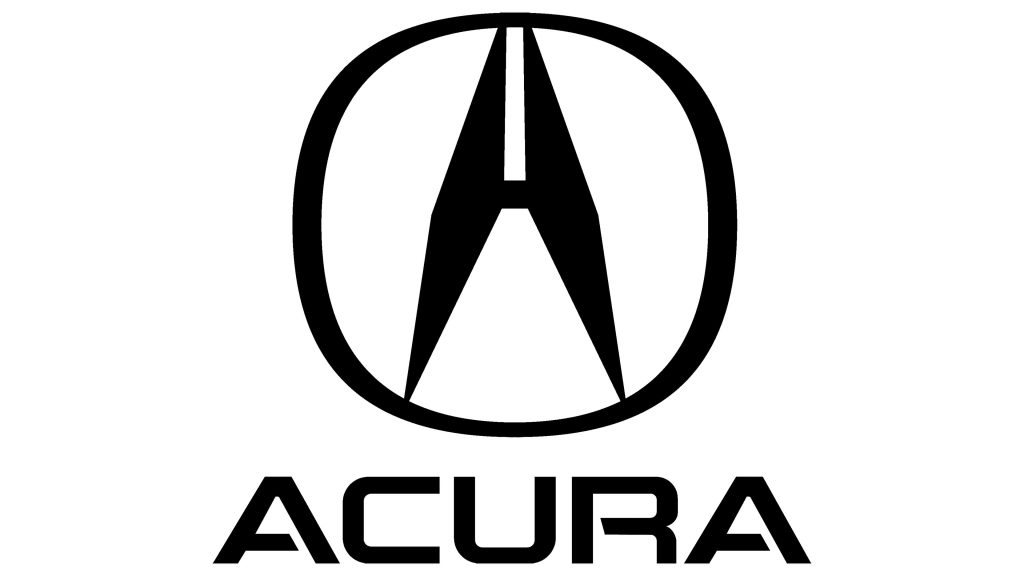Acura is a subsidiary of the famous ‘Honda’ corporation. It was created to build luxury cars – stylish and expensive. A very young company, it was created in 1986 by the old man Honda himself. He was also the one to approve the current logotype the brand is wearing.
Meaning and History
Acura’s logo has been around almost as long as the company itself, unchanged. The designers tried to show the spirit of technology and the unity of the mother and daughter companies.
Who designed Acura logo?
The Honda designers did it, although there aren’t too many similarities between the logos of these two.
1986 – 1989
First, the logo was simply a text, featuring the name of the company. It was black and had a futuristic look, which was, no doubt, intended to inspire the technological aptitude and Honda’s aims. They are one of the most prominent investors into the Japanese science – mainly robotics.
1989 – now
After 3 years, the designers finally came up with the idea for a logo proper. They created a symbol that looked like a caliper (a measuring tool), a letter ‘A’ and a letter ‘H’ (simultaneously). The first was meant to imply the quality and the innovativeness, and the letters stood for Acura and Honda, of course – to promote unity between the two.
The image was absolutely black and encircled into a rounded polygon of sorts. In the end, it seems pretty stylish and futuristic. There was really no reason to change that, and they never did.
Emblem and Symbol
Honda is notorious for their scientific tendencies. The robot ASIMO is in part their creation. Naturally, they’d want their luxury car producer to have a logo that would cry futurism. And it does by using complex shapes like rounded polygons.
There is an image of a tool, but you can’t really see it at first. You understand that it’s some kind of an instrument, but it’s vague. It allowed designers to give it many meanings, which is clever.
The Legends
It’s a relatively young company, but they’ve already created several fairly famed cars. One of the most intriguing is the ARX-01, which is a fairly successful race car with a 42% of wins. It’s one of the few really successful Japanese racing cars, although it hasn’t yet won at Le Mans.




